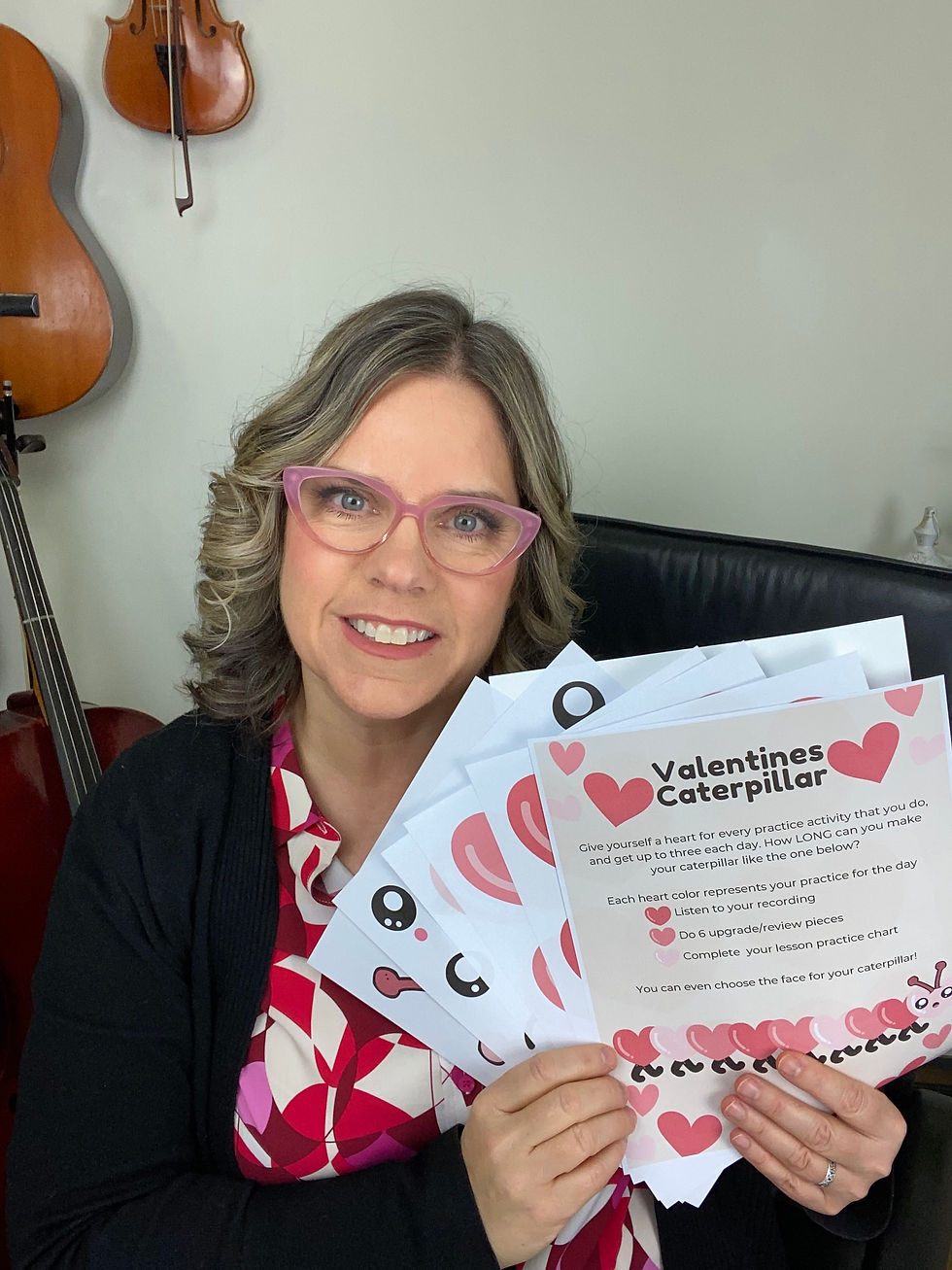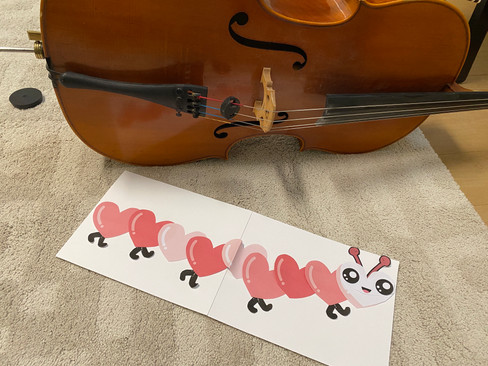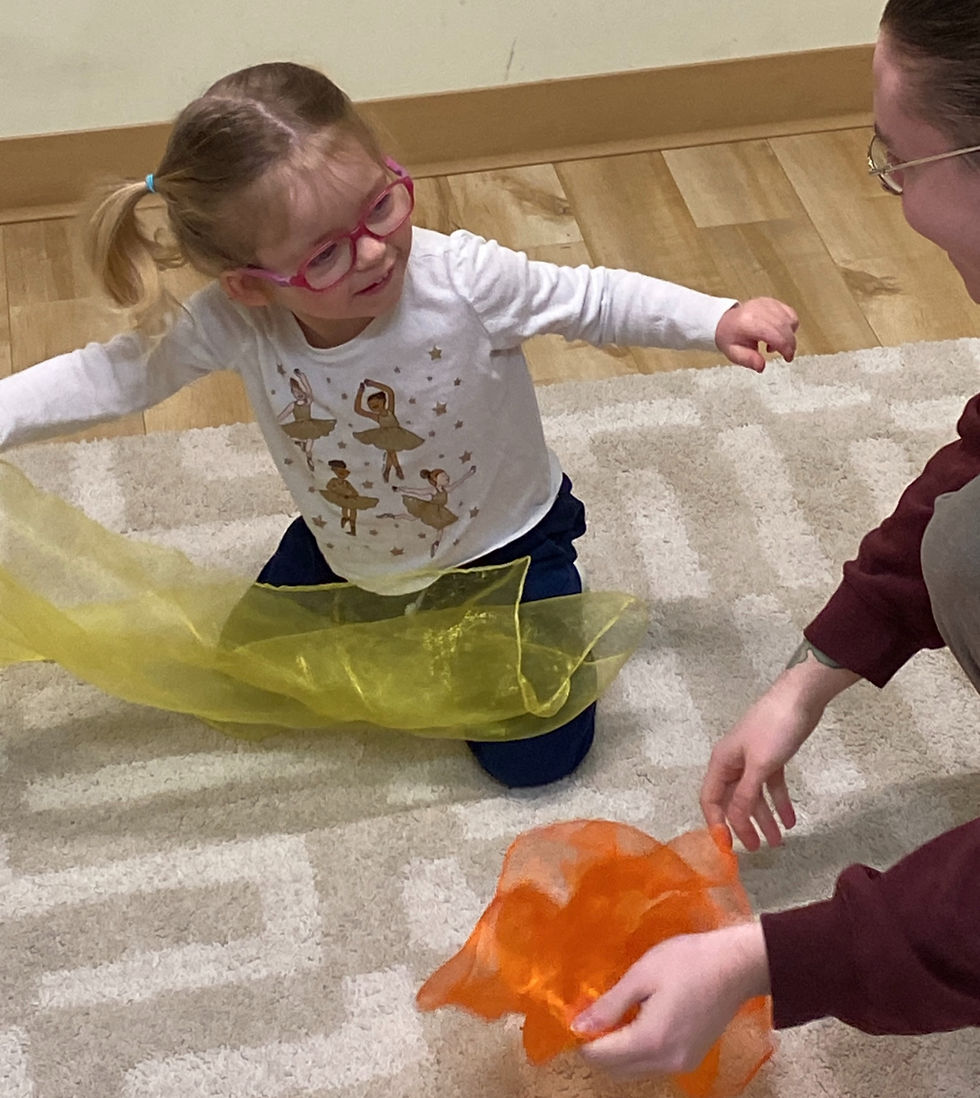#105 Love Caterpillar Activity and How to Learn Music Faster
- Christy | the Practice Pro

- Jan 15, 2024
- 7 min read
Updated: Mar 27, 2024

By Christy | the Practicing Pro
You can also Watch LIVE/HERE
Want to learn to play your musical instrument faster? Easier?
Dr. Shinichi Suzuki, in all his wisdom, taught the importance of daily music listening in learning to play a musical instrument.
Drawing parallels between learning a language and learning an instrument, Suzuki taught the benefits of daily listening in a student’s musical journey to mastering an instrument.
Today I am excited to share with you a Valentine's Day listening activity that you can also use to inspire daily practice, and we'll explore a bit Suzuki's Philosophy on Listening.
Dr. Suzuki, the founder of the Suzuki Method, believed that exposure to music from an early age is key to developing their musical abilities. He often compared learning music to learning a language, emphasizing the importance of immersion and consistent listening. He said that, "Children learn to speak by listening to the spoken language around them. Similarly, they can learn to play music by listening to music” and having it all around them. This is why listening to music every day in your home, is such an important part of the musical learning process. As a parent, you can play the music your child is learning or will be learning - like a gift for them. By doing this everyday you are making their learning later so much easier and the pace they learn so much faster! For teachers when you make listening assignments a priority and educate the parents about why it's so important you are helping your students to have more success.
I always tell my students that listening is more important than practicing. So listen every day - especially on busy days, you can listen extra!
Learning a Language vs. Learning an Instrument:
Doctor Suzuki said, "Musical ability is not an inborn talent but an ability which can be developed. Any child who is properly trained can develop musical ability, just as all children develop the ability to speak their mother tongue."
When Suzuki drew this parallel between speaking a language and learning he noticed that when a child is surrounded by people in their home speaking a language, then over time they effortlessly will acquire the ability eventually to speak the language as well. This happens no matter their IQ, their economic status, or the effort and time given to them by adults to help them learn to speak the languge.. They listen to the language before they speak and then through continuous exposure after that they eventually are able to speak the language fluently as well.
This happens though remember through continuous exposure, starting with listening before they even attempt to speak, during the learning process and afterwards as well. It really is an immersion.
With children learning a language - immersion is key, right?
The Power of Daily Listening:
Applying this principle to music education, Suzuki advocated for a similar approach – listening to music regularly before actively engaging with an instrument had amazing results.
The same principle applies to learning a musical instrument. Daily listening serves as a foundation, helping children internalize the sounds, rhythms, and nuances of the music they aim to play. Music is a language. The voice becomes the instrument and the notes become the letters put together in phrases or sentences and then into conversations or pieces.
Suzuki encouraged parents, students and teachers to make it a priority to listen daily. The music they are listening to paves the way for a better connection to the instrument and an easier, fasting learning experience..
Listen to music that will mold their characters:
The music we choose for our children to listen to will also mold their characters. Here is where as a parent we need to ask ourselves - HOW does this music make me feel, motivate me to do, or to act?
Doctor Suzuki said, "Teaching music is not my main purpose. I want to make good citizens. If children hear fine music from the day of their birth and learn to play it, they develop sensitivity, discipline, and endurance. They get a beautiful heart."
What kinds of music will help develop a beautiful heart?
Doctor Suzuki chose for children, thoughtful mainly baroque-style music. Cheerful and optimistic Gavottes and Minuets. Music that is singable and memorable.
For me I also liked to play for my children, traditional music from their cultural background. I felt it would help give them a connection to their cultures as well as a sense of belonging. I liked playing world music for them as well to expose them to diverse music with different keys, musical phrases, melodies and sounds. I felt this would also help them to be open to other people's traditions and tastes and differences instead of knowing just one way. The various scales and keys of classical music also will challenge their ear so that's a great choice for developing intelligence. Country or pop music tends to be a smaller range with similar keys but this type of music encourages singing and expression through the lyrics and can encourage joy, expressions of sadness etc.. and is great to dance to as well. We would dance, move, exercise and clean to these style of songs as well. So you get the idea - make sure you listen to different kinds of music as well as the music they are studying on their instruments.
Listen to the music they are learning:
As far as their instruments go remember this - If you can sing a song then you can play it. The ideal is to listen to a song so many times before you start playing it that you can sing every note already first. If you are starting out then first listen to Suzuki Book 1 every day, or the recording that goes with the method you are learning. Then second, listen every day to something different, and I suggest the same thing for a few months until you can sing all of the melodies easily. You know it is the right amount of time when you spontaneously hum or sing the songs in your car, doing errands, going for a walk or cleaning etc…
Valentine's Day Listening Activity:
To make daily music listening more engaging and rewarding, we have created at Practicingpro, this fun Valentine's Day activity. Inspired by Suzuki's philosophy, create a "Love the Music Caterpillar." Each day, as students listen to a piece of music or a playlist, have them add a segment to their caterpillar. By Valentine's Day, the caterpillar will have grown into a beautiful musical creature, symbolizing the progress made through consistent listening and practice. Choose a certain length for your goal and when you finish it send me a photo! I’d love to see it. :) When you are done you can also color or paint the butterfly as a reward and bring it back to your teacher OR send me a photo at practicing pro and I'll include it here to recognize!
Encouragement for the Journey:
In the spirit of Suzuki's philosophy, let's encourage aspiring musicians to develop the habit of daily listening and enjoying it. Remember, every note listened to is a step towards learning easier and faster. Just like a caterpillar transforming into a butterfly, your child will also be able to play an instrument, and you can make it happen with listening as your foundation. As Dr. Suzuki believed, "Musical ability is within the reach of all people."
Instructions for the Caterpillar Valentine Activity:
I have included instructions that you can print for your students. There are a few versions with different instructions depending on if you want the caterpillar to be JUST for listening, just for practicing, or for specific things.
1. Listening
2. Practicing
3. Listening, Reviewing and Practicing
I am using version THREE 🙂at our school this year!

Helpful hints for teachers preparing multiple activities:
Print one COLOR file for each student, staple it with the instruction sheet you choose on the front and give it as a package.
FREE PDF
Print the black and white file for each student, staple it with the instruction sheet you choose on the front and give it as a package. They can colour their own caterpillars.
You can print the black and white heart sheets on colored paper. This is how I did mine so see examples below.





















Comments